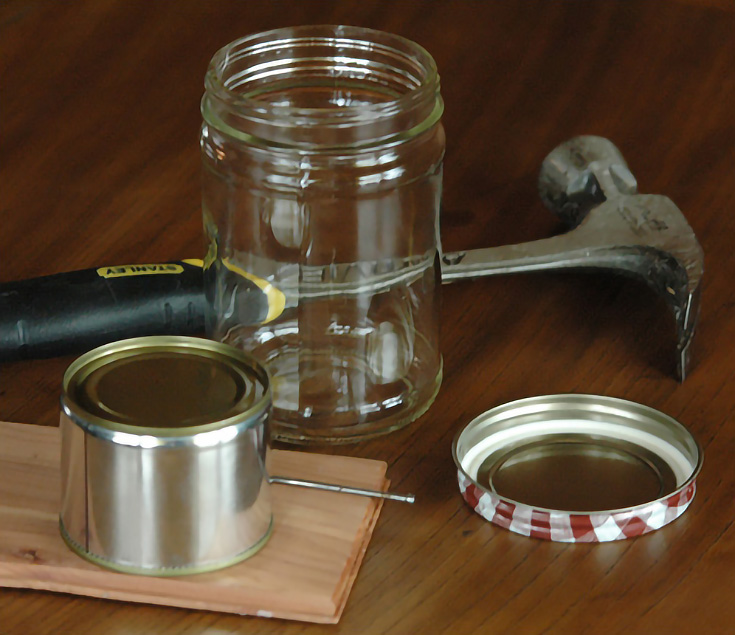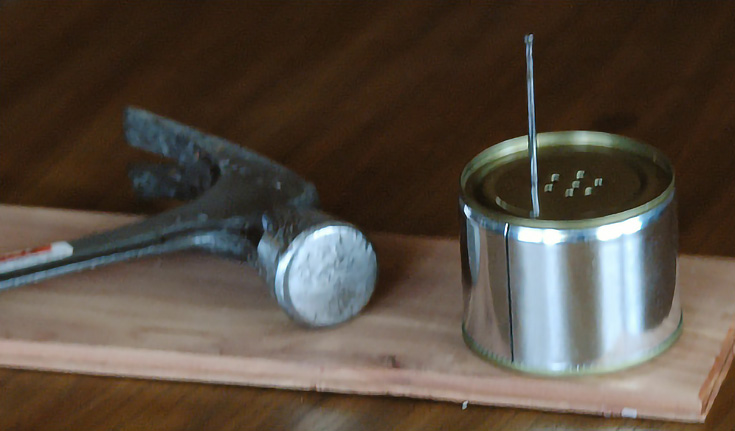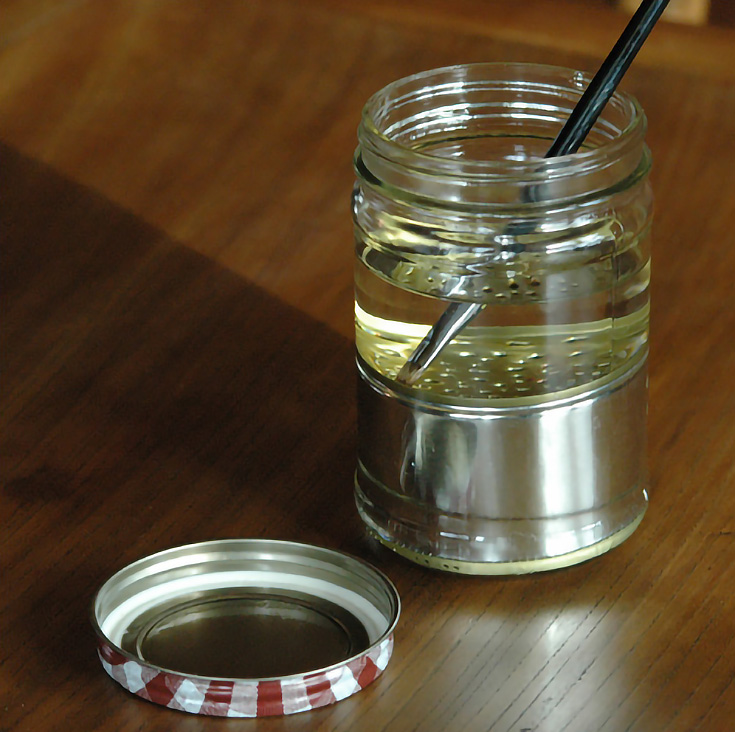If you’re an oil painter, then I’m sure you already know that taking the time to properly clean your paintbrushes after painting will make your brushes last a lot longer and ultimately save you money.
Naturally, there are plenty of paintbrush cleaning aids you can buy in art supply stores (usually jars with a metal screen or grids along the bottom) but if you want an easy and cheap way to make your own paintbrush cleaner jar, here’s how.
Tools and Materials Needed:
1. Empty peanut butter jar or any jar with straight sides
2. Empty 4 oz. tin can or one that will fit into the jar (e.g. an olive can)
3. Nail (size will depend on how large of holes you want to make, I use an 8d)
4. Hammer (and a board to hammer on)
Once you’ve found an empty jar and tin can, clean them up, remove any labels and make sure the tin can will fit inside the jar. Also, test the jar with water to make sure that no leaks occur. A screw-on lid is preferred.
After the jar and can are clean and have had their labels removed, it’s time to hammer out any frustrations you may have.
Place the empty tin can onto your hammering board with its flat side up, then take the nail and hammer and begin making holes into the metal lid of the can, spacing them approximately ¼ inch apart.
Once you’ve finished perforating the metal can, insert the can into your jar with its holes facing up. Then, for your last step, fill the jar with paint thinner, turpentine, or mineral spirits (whichever solvent you prefer) and try it out!
I’ve found that I actually prefer using home-made paintbrush cleaners versus store-bought ones, simply because it’s easier to get the oil paint out of the brushes by pushing downward into the tin can holes as opposed to scraping the brush alongside a wire screen (found in store-bought paintbrush cleaning jars).
And, as an extra bonus, the tin can inside this home-made brush cleaner also helps to keep all of the residual oil paint contained at the bottom of the jar—so you’re not stirring up old paint every time you clean your paintbrushes.
To learn more about MaryAnn and her artwork, please visit her daily painting blog.
This post may contain affiliate links.



